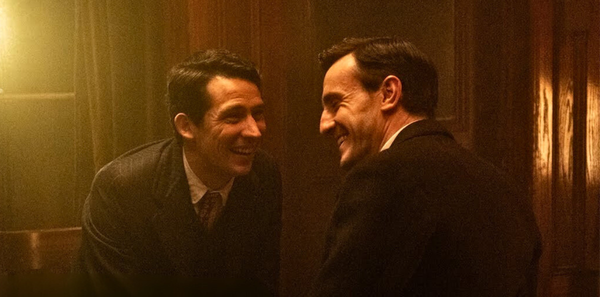★★★ (3 out of 4)
Delicacy is being transacted in “The History of Sound,” a WW1-era love story fighting the uphill battle of reaching audiences looking for the usual crass comic-book escapism that keeps the lights on in theaters these days. If quieter revelations are more your speed, try this one.
In this crushing beauty of a movie, Paul Mescal and Josh O’Connor do their own singing and find the emotions caught in the space between words.
Starring Paul Mescal and Josh O’Connor, two of the best young actors anywhere, “The History of Sound” is a love story between two men who act on their attraction but leave the details unspoken. They’re not cowboys out of the “Brokeback Mountain” school of societal repression; they’re students of music, driven to examine the roots of sound. Music is how they connect, even when their relationship turns physical.

Mescal plays Lionel, raised on a Kentucky farm yet so obsessed with music that he claims he can see it. A scholarship to the New England Conservatory in Boston intensifies his feelings. At a local bar, he hears a pianist play a song that his father (Raphael Sbarge) used to sing. The piano man’s name is David (O’Connor), born in Newport, Rhode Island, but sent to live with an uncle in London after the death of his parents.
After the men talk and share songs and stories, David confesses that he spends his time in the summers collecting roots music. Working from a script adapted by Ben Shattuck from his short story of the same name, director Oliver Hermanus makes it very clear that the musical connection between David and Lionel is as strong as their sexual attraction.
A note here about filmmaker Hermanus, the South African auteur who guided Bill Nighy to a Best Actor Oscar nomination for his role in “Living” as a London bureaucrat diagnosed with terminal cancer and trying to make the best of his remaining days. “Living” is a remake of Akira Kurosawa’s 1952 classic “Ikiru,” and thrives on the subtlety Hermanus brings to his creative projects. You can also sense his gift for nuance in every scene in this film.
The same goes for the actors. Mescal, the Irish actor and Oscar nominee for “Aftersun,” shows a remarkable gift for expression in the space between words. He also does his own singing in a voice that reflect shis intuitive gifts as an actor. And the British O’Connor, an Emmy winner for playing Prince Charles in “The Crown,” impresses mightily in his scenes with Mescal, as they build a fierce but fleeting relationship between Lionel and David, whose memory we can believe lasted for two lifetimes.
This is especially true when the war intervenes—with David enduring trauma while serving and Lionel, plagued by eyesight issues, returning to Kentucky. It’s only afterward, when the men reunite on a 1919 trip to the backwoods of Maine, that their professional and personal passions merge. They share a tent and collect folk ballads that reflect the traditional music that informed the past and, now, their uncertain future.
After the men drift into separate lives, including Lionel’s travels to Rome and a going-nowhere flirtation with a woman (Emma Canning), the film drifts with them, recovering only in the last section when a much older Lionel, now a celebrated ethnomusicologist and portrayed by the great Chris Cooper, is shocked into a revelation. This time it’s in the form of newly discovered wax recordings Lionel and David had made of their Maine trip.
The memories flood in along with the glorious music, leaving the audience to remember, along with Lionel, the pain of losing the great love of his life. Yes, Lionel can still “see” the music, and now—thanks to this crushing beauty of this movie—so can we.

